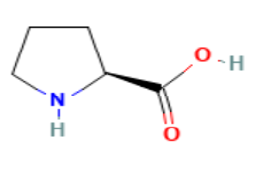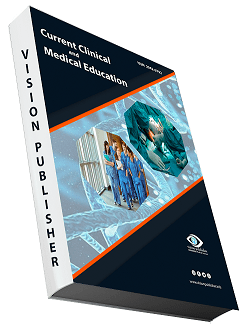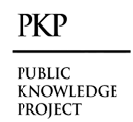Bioactive Chemical Compounds Released from Haemophilus influenzae by Using Gas Chromatography Mass Spectrometer GC-MS and Investigation Effect of Citrullus colocynthis, Urtica dioica and Foeniculum vulgare as Antibacterial Activity
Keywords:
Haemophilus influenzae, GC-MS, Citrullus colocynthis, Urtica dioica, Foeniculum vulgare, Antibacterial activityAbstract
Background : Various VOCs coming from or absorbed by the Haemophilus influenzae cultures were identified using the GC-MS after the headspace sampling was done with the help of multibed sorption tubes. During bacteria cultivation, sampling was done at various time intervals to analyze the changes that occurred in VOC metabolism.
The purpose of our study: Studying the bioactive volatiles produced by Haemophilus influenzae and Examining the antibacterial potential of the medicinal plants Citrullus colocynthis and Urtica dioica with Foeniculum vulgare.
Materials and Methods: The Fresh of Citrullus colocynthis, Urtica dioica, and Foeniculum vulgare used in this present study was bought form a local market in Hilla city /Iraq. Each plant sample was ground in a mortar approximately weighing one hundred grams. Each plant powder 10g was extracted with ethanol extract of 100ml the solution was filtered and evaporated. The examination itself was performed using a GC–MS approach, and an Agilent 789 A instrument was used. The extracts were prepared and the sterile blotting paper disc (5 mm) was soaked in the diluted extract at two final concentrations; 50 μL and100 μL per disc.
Results : GC-MS analysis of Haemophilus influenzae found thirteen bioactive compounds. Investigation effect of ethanolic extract of Citrullus colocynthis, Urtica dioica and Foeniculum vulgare comparison with Rifambin and Cefotoxime (standard antibiotics) as antibacterial activity against Haemophilus influenzae recorded 16.29±0.06, 10.89±0.03, and 12.36±0.03 respectively for Citrullus colocynthis while recorded 15.09±0.05, 13.08±0.04, and 09.73±0.03 respectively for Urtica dioica. Investigation effect of ethanolic extract of Foeniculum vulgare recorded 14.73±0.05, 10.94±0.03, and 09.64±0.04 respectively. Citrullus colocynthis 16.29±0.06 mm was very highly active against Haemophilus influenzae.
Downloads
References
D. Fontanals, R. Bou, I. Pons et al., “Prevalence of Haemophilus influenzae carriers in the Catalan preschool population,” European Journal of Clinical Microbiology & Infectious Diseases, vol. 19, no. 4, pp. 301–304, 2000.
H. Zhu, A. Wang, J. Tong et al., “Nasopharyngeal carriage and antimicrobial susceptibility of Haemophilus influenzae among children younger than 5 years of age in Beijing, China,” BMC Microbiology, vol. 15, no. 1, p. 6, 2015.
G. A. Mackenzie, A. J. Leach, J. R. Carapetis, J. Fisher, and P. S. Morris, “Epidemiology of nasopharyngeal carriage of respiratory bacterial pathogens in children and adults: crosssectional surveys in a population with high rates of pneumococcal disease,” BMC Infectious Diseases, vol. 10, no. 1, p. 304, 2010.
O. Abdullahi, J. Nyiro, P. Lewa, M. Slack, and J. A. G. Scott, “+e descriptive epidemiology of Streptococcus pneumoniae and Haemophilus influenzae nasopharyngeal carriage in children and adults in Kilifi district, Kenya,” Pediatric Infectious Disease Journal, vol. 27, no. 1, pp. 59–64, 2008.
D. Gkentzi, M. P. Slack, and S. N. Ladhani, “+e burden of nonencapsulated Haemophilus influenzae in children and potential for prevention,” Current Opinion in Infectious Diseases, vol. 25, no. 3, pp. 266–272, 2012.
C. T. Lim, N. Parasakthi, and S. D. Puthucheary, “Neonatal meningitis due to non-encapsulated Haemophilus influenzae in a set of twins—a case report,” Singapore Medical Journal, vol. 35, no. 1, pp. 104-105, 1994.
S. J. Moghaddam, “Nontypeable Haemophilus influenzae in chronic obstructive pulmonary disease and lung cancer,” International Journal of Chronic Obstructive Pulmonary Disease, vol. 6, pp. 113–123, 2011.
T. J. Falla, D. W. M. Crook, W. A. G. Kraak et al., “Populationbased study of non-typable Haemophilus influenzae invasive disease in children and neonates,” 1e Lancet, vol. 341, no. 8849, pp. 851–854, 1993. [13] WHO, Haemophilus influenzae Type B (HiB), WHO fact sheet no. 294, WHO, Geneva, Switzerland, 2005.
A. Wang, S. Yu, K. Yao et al., “Antimicrobial susceptibility of Haemophilus influenzae strains and antibiotics usage patterns in pediatric outpatients: results from a children’s hospital in China (2000–2004),” Pediatric Pulmonology, vol. 43, no. 5, pp. 457–462, 2008.
Harrington, J. C., Wong, S. M. S., Rosadini, C. V., Garifulin, O., Boyartchuk, V., and Akerley, B. J. (2009). Resistance of Haemophilus influenzae to reactive nitrogen donors and gamma interferon-stimulated macrophages requires the formatedependent nitrite reductase regulator-activated ytfE Gene. Infect. Immun. 77, 1945–1958.
Herbert, M., Kraiss, A., Hilpert, A.-K., Schlör, S., and Reidl, J. (2003). Aerobic growth deficient Haemophilus influenzae mutants are non-virulent: implications on metabolism. Int. J. Med. Microbiol. 293, 145–152.
Jones, R. W., and Garland, P. B. (1977). Sites and specificity of reaction of bipyridylium compounds with anaerobic respiratory enzymes of Escherichia coli - effects of permeability barriers imposed by the cytoplasmic membrane. Biochem. J. 164, 199–211.
Kappler, U., Sly, L. I., and Mcewan, A. G. (2005). Respiratory gene clusters of Metallosphaera sedula - differential expression and transcriptional organization. Microbiology 151, 35–43. doi: 10.1099/mic.0.27515-0
Moghaddam, S. J., Ochoa, C. E., Sethi, S., and Dickey, B. F. (2011). Nontypeable Haemophilus influenzae in chronic obstructive pulmonary disease and lung cancer. Int. J. Chronic Obstruct. Pulmon. Dis. 6, 113–123.
Papin, J. A., Price, N. D., Edwards, J. S., and Palsson, B. O. (2002). The genome-scale metabolic extreme pathway structure in Haemophilus influenzae shows significant network redundancy. J. Theor. Biol. 215, 67–82.
Raghunathan, A., Price, N. D., Galperin, M. Y., Makarova, K. S., Purvine, S., Picone, A. F., et al. (2004). In silico metabolic model and protein expression of Haemophilus influenzae strain Rd KW20 in Rich Medium. OMICS 8, 25–41.
Schirra, H. J., Anderson, C. G., Wilson, W. J., Kerr, L., Craik, D. J., Waters, M. J., et al. (2008). Altered metabolism of growth hormone receptor mutant mice: a combined NMR metabonomics and microarray study. PLoS ONE 3:e2764.
Tatusov, R. L., Mushegian, A. R., Bork, P., Brown, N. P., Hayes, W. S., Borodovsky, M., et al. (1996). Metabolism and evolution of Haemophilus influenzae deduced from a whole-genome comparison with Escherichia coli. Curr. Biol. 6, 279–291.
Wolfe, A. J. (2005). The acetate switch. Microbiol. Mol. Biol. Rev. 69, 12–50.
Al-Hwaiti, M.S.; Alsbou, E.M.; Abu Sheikha, G.; Bakchiche, B.; Pham, T.H.; Thomas, R.H.; Bardaweel, S.K. Evaluation of the anticancer activity and fatty acids composition of “Handal”(Citrullus colocynthis L.) seed oil, a desert plant from south Jordan. Food Sci. Nutr. 2021, 9, 282–289.
Joshi, G.; Kaur, J.; Sharma, P.; Kaur, G.; Bhandari, Y.; Kumar, R.; Singh, S. P53-mediated anticancer activity of Citrullus colocynthis extracts. Nat. Prod. J. 2019, 9, 303–311.
Scott-Thomas AJ, Syhre M, Pattemore PK, Epton M, Laing R, et al. (2010) 2- aminoacetophenone as a potential breath biomarker for Pseudomonas aeruginosa in the cystic fibrosis lung. BMC Pulm Med 10: 56.
Di Martino P, Fursy R, Bret L, Sundararaju B, Phillips RS (2003) Indole can act as an extracellular signal to regulate biofilm formation of Escherichia coli and other indole-producing bacteria. Can J Microbiol 49: 443–449.
Hu M, Zhang C, Mu Y, Shen Q, Feng Y (2010) Indole affects biofilm formation in bacteria. Indian J Microbiol 50: 362–368.
Brooks JB (1977) Detection of bacterial metabolites in spent culture media and body fluids by electron capture gas-liquid chromatography. Adv Chromatogr 15: 1–31.
Anema PJ, Kooiman WJ, Geers JM (1973) Volatile acid production by Clostridium sporogenes under controlled culture conditions. J Appl Bacteriol 36: 683–687.
Hiele M, Ghoos Y, Rutgeerts P, Vantrappen G, Schoorens D (1991) Influence of nutritional substrates on the formation of volatiles by the fecal flora. Gastroenterology 100: 1597–1602.
Scotter JM, Langford VS, Wilson PF, McEwan MJ, Chambers ST (2005) Realtime detection of common microbial volatile organic compounds from medically important fungi by selected ion flow tube-mass spectrometry (SIFT-MS). J Microbiol Methods 63: 127–134.
Filipiak W, Sponring A, Bauer M, Filipiak A, Ager C, et al. (2012) Molecular analysis of volatile metabolites released specifically by Staphylococcus aureus and Pseudomonas aeruginosa. BMC Microbiol 12: 113.
Dolch ME, Hornuss C, Klocke C, Praun S, Villinger J, et al. (2012) Volatile compound profiling for the identification of gram-negative bacteria by ion molecule reaction–mass spectrometry. J Appl Microbiol 113: 1097–1105.
Allardyce RA, Langford VS, Hill AL, Murdoch DR (2006) Detection of volatile metabolites produced by bacterial growth in blood culture media by selected ion flow tube mass spectrometry (SIFT-MS). J Microbiol Methods 65: 361–365.
Julak J, Stranska E, Rosova V, Geppert H, Spanel P, et al. (2006) Bronchoalveolar lavage examined by solid phase microextraction, gas chromatography–mass spectrometry and selected ion flow tube mass spectrometry. J Microbiol Methods 65: 76–86.
Preti G, Thaler E, Hanson CW, Troy M, Eades J, et al. (2009) Volatile compounds characteristic of sinus-related bacteria and infected sinus mucus: analysis by solid-phase microextraction and gas chromatography–mass spectrometry. J Chromatogr B Analyt Technol Biomed Life Sci 877: 2011–2018.
Fend R, Kolk AH, Bessant C, Buijtels P, Klatser PR, et al. (2006) Prospects for clinical application of electronic-nose technology to early detection of Mycobacterium tuberculosis in culture and sputum. J Clin Microbiol 44: 2039–2045.
Carey JR, Suslick KS, Hulkower KI, Imlay JA, Imlay KRC, et al. (2011) Rapid identification of bacteria with a disposable colorimetric sensing array. J Am Chem Soc 133: 7571–7576.
Bossuyt PM, Reitsma JB, Bruns DE, Gatsonis CA, Glasziou PP, et al. (2003) Towards complete and accurate reporting of studies of diagnostic accuracy: the STARD initiative. BMJ 326: 41–44.
Savelev SU, Perry JD, Bourke SJ, Jary H, Taylor R, et al. (2011) Volatile biomarkers of Pseudomonas aeruginosa in cystic fibrosis and noncystic fibrosis bronchiectasis. Lett Appl Microbiol 52: 610–613.
Scholpp J, Schubert JK, Miekisch W, Geiger K (2002) Breath markers and soluble lipid peroxidation markers in critically ill patients. Clin Chem Lab Med 40: 587–594.

Downloads
Published
How to Cite
Issue
Section
License

This work is licensed under a Creative Commons Attribution 4.0 International License.
Current Clinical and Medical Education













